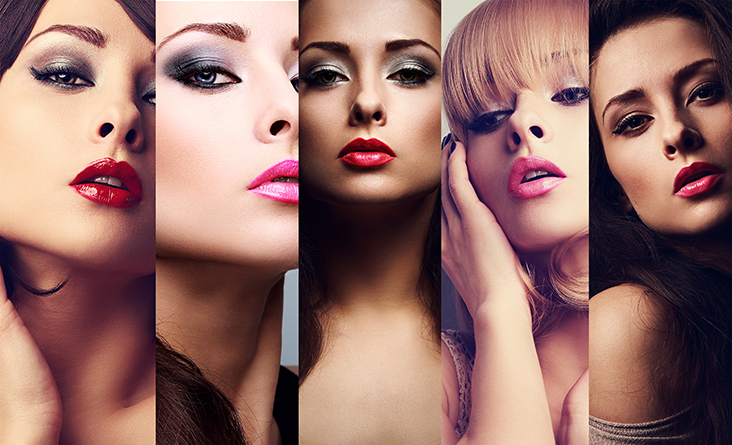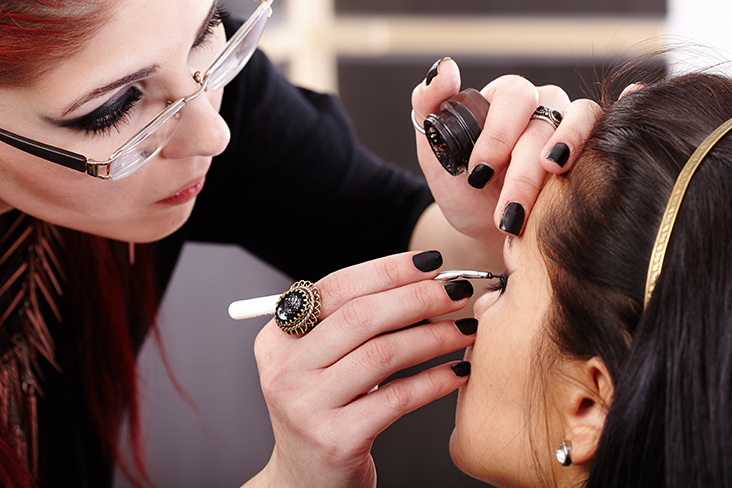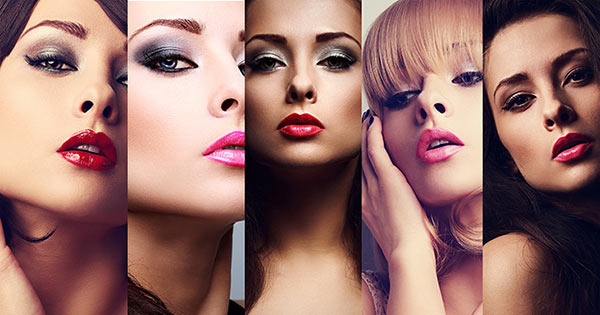
A makeup artist enhances the best features of each unique face. Makeup artists can work in many roles and settings, specializing in weddings, events, editorial & fashion, television, film, theater, and more. Estheticians offer skincare treatment information tailored to each skin type and perform treatment on acne, rosacea, brown spots, melasma, and more.
As a professional, it’s essential to keep up with fashion and pop culture trends in the beauty industry and stay informed about new, innovative scientific developments relevant to skincare and beauty. Keeping your finger on the pulse of the beauty industry will give you an edge in any role.
Job Outlook
With a cosmetology or an esthetics license from an accredited school and relevant experience, the job possibilities for a makeup artist are varied. The cosmetology industry is relatively stable, with jobs predicted to grow over the next decade by 19%. You might also work in a makeup department or cosmetics store in product sales for a steady career. Jobs in other industries, such as television, theater, and film are fiercely competitive, and there is no guarantee that even with training, you will find regular work. Experience, networking, and internships are essential in securing this kind of job.
Make It Happen
Education & Experience
It’s no secret that becoming a great artist takes plenty of practice. It also helps to have supportive teachers who foster your growth and to be surrounded by talented peers while honing your craft. The more people you practice with, the more skilled you’ll be in a broad range of skin tones, complexions, and face shapes. Take photos of your work. It’s a good way to get used to how makeup translates to the camera, especially if you’re planning on specializing as a makeup artist in print publication, film, or television.
Creating a portfolio is important when you are applying for jobs. For portfolio shots, it’s best to use a professional photographer who will make sure your models look amazing in the right lighting and setting. Your portfolio should showcase different styles of makeup, including beauty, experimental, simple, and editorial.
A cosmetology certification, a strong portfolio, and experience are ideal for making you more eligible for the cream of the crop rather than more common jobs. If you are striving for more competitive jobs, consider applying for a position as a makeup counter artist in a department store to gain experience in makeup application and products. Other ways to gain experience include working backstage in grassroots, community-based theaters, or on student film projects.
As a student of esthetics, you’ll gain a deep understanding of skin analyses, treatment, and product formulations. Before graduating from your esthetician program, you’ll have the chance to develop a conceptually cohesive portfolio, critiqued by instructors, which you can later use to prove your chops and ideally land a job within the industry.

Skills & Attributes
Creativity
A makeup artist should be capable of creating a variety of looks, ranging from natural to dramatic, using a combination of color, design, and application to make someone beautiful.
Color Knowledge
To apply makeup effectively, you’ll need to understand how someone’s skin tone and features work with the different colors of makeup you’re applying. Concealing red spots or dark blue shadows under tired eyes requires using opposites on the color wheel, so you’ll need to know your color wheel inside out! A cosmetology program at a beauty school will teach this information.
People Skills
A makeup artist works extremely closely with clients for sustained periods, from initial consultations to application, so people skills are critical. An important component in stressful and time-sensitive working situations, such as the preparation for a wedding or a studio shoot, a makeup artist needs to be a great listener, a good communicator, and a friendly, efficient person.
Skin Analysis
Aside from giving spa-like facials, estheticians perform highly effective skin analyses that can pinpoint problem areas on every different skin type. Estheticians may prescribe a routine to help enhance the glow of your skin while minimizing the appearance of dark spots, acne, scar tissue, and wrinkles.
Business Know-How
If you’re planning to work as a freelance makeup artist or esthetician, you’ll run your own business. You’ll need to be confident with setting your rates, keeping your books, invoicing, and paying your taxes. Confidence with figures is important if you are working in television, theater, or film, as you will be required to stick to a budget, plan your work, and keep costs under control.
Organization
Being punctual and organized is essential whether you’re working in a salon as an esthetician or as a freelance makeup artist. You are likely to be working in stressful, time-pressured situations where keeping to a schedule is an important part of the job.
Sales Skills
If you’re working on a makeup counter, turning a demonstration into a sale is essential. You’ll have to be friendly, personable and be able to talk about the products enthusiastically with good knowledge and give advice suited to your customer.
Stamina
Being on your feet all day as you work requires physical fitness and stamina. Makeup artistry is hard work, and you’ll need to look after yourself to stay healthy and make sure you get plenty of sleep and exercise.
Tools of the Trade
You will need to build up a makeup kit, which can be quite a substantial investment when you start. You don’t need a vast array of products at first but invest in quality application and beauty products, especially with your tools. The basics might include a foundation palette for different skin tones, an eyeshadow palette, lipsticks, blush, face powder, black eyeliner, and mascara.
Your kit should include a variety of brushes and brush cleaners. The basic range of brushes you’ll need are:
- Foundation brush
- Powder brush
- Blush brush
- Concealer brush
- Blending brush
- Eyeshadow brush
- Precision brush
- Lip brush
You can assemble your kit from your favorite brands, or save time and possibly money by buying a pre-assembled kit.
Helpful Tips
- Instead of spending money buying lip liner, use eyeshadow applied with a brush and covered with lipstick. This works just as well!
- Use a fluffy brush as an angled brush by squashing the bristles flat with your hand.
- Apply foundation over the lips before applying liner or lipstick. This removes uneven tones.




Comments are closed.